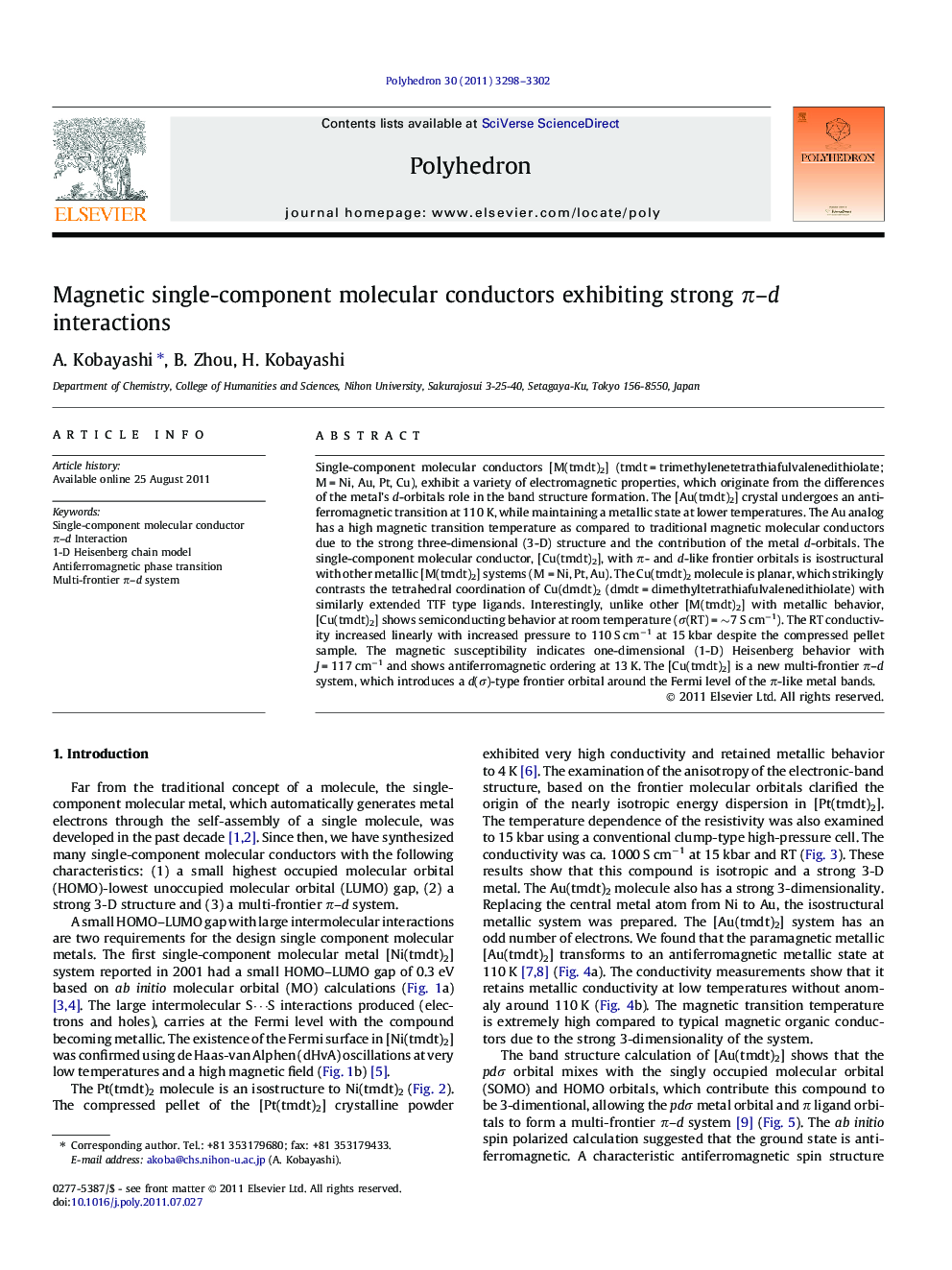| Article ID | Journal | Published Year | Pages | File Type |
|---|---|---|---|---|
| 1336026 | Polyhedron | 2011 | 5 Pages |
Single-component molecular conductors [M(tmdt)2] (tmdt = trimethylenetetrathiafulvalenedithiolate; M = Ni, Au, Pt, Cu), exhibit a variety of electromagnetic properties, which originate from the differences of the metal’s d-orbitals role in the band structure formation. The [Au(tmdt)2] crystal undergoes an antiferromagnetic transition at 110 K, while maintaining a metallic state at lower temperatures. The Au analog has a high magnetic transition temperature as compared to traditional magnetic molecular conductors due to the strong three-dimensional (3-D) structure and the contribution of the metal d-orbitals. The single-component molecular conductor, [Cu(tmdt)2], with π- and d-like frontier orbitals is isostructural with other metallic [M(tmdt)2] systems (M = Ni, Pt, Au). The Cu(tmdt)2 molecule is planar, which strikingly contrasts the tetrahedral coordination of Cu(dmdt)2 (dmdt = dimethyltetrathiafulvalenedithiolate) with similarly extended TTF type ligands. Interestingly, unlike other [M(tmdt)2] with metallic behavior, [Cu(tmdt)2] shows semiconducting behavior at room temperature (σ(RT) = ∼7 S cm−1). The RT conductivity increased linearly with increased pressure to 110 S cm−1 at 15 kbar despite the compressed pellet sample. The magnetic susceptibility indicates one-dimensional (1-D) Heisenberg behavior with J = 117 cm−1 and shows antiferromagnetic ordering at 13 K. The [Cu(tmdt)2] is a new multi-frontier π–d system, which introduces a d(σ)-type frontier orbital around the Fermi level of the π-like metal bands.
Graphical abstractA single-component molecular conductor [Cu(tmdt)2] is isostructural with metallic [M(tmdt)2] systems (M = Ni, Pt, Au). [Cu(tmdt)2] is a new multi-frontier π–d system which introduced dσ-type frontier orbital around the Fermi level of the π-like metal bands.Figure optionsDownload full-size imageDownload as PowerPoint slideHighlights► [Cu(tmdt)2] is a single-component magnetic molecular conductor. ► The Cu(tmdt)2 molecule takes a planar structure. ► [Cu(tmdt)2] shows semiconducting behavior (σ(RT) ∼ 7 S cm−1). ► Magnetic susceptibility showed 1D Heisenberg behavior and AF ordering at 13 K. ► [Cu(tmdt)2] is a new multi-frontier π–d system.
